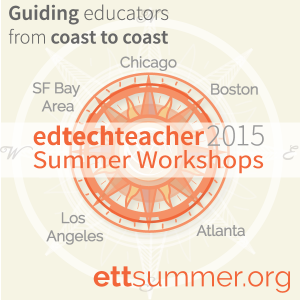This post first appeared on Diversa.
Over the past few months, in a number of different contexts, an interesting question has presented itself. When teaching about the power of text-to-speech, several teachers have asked whether or not it could have a long-term, detrimental impact. These thoughtful educators question if being able to hear words could actually decrease literacy skills and remove the need for students to learn to read.
However, a 2013 report indicates that eReaders are More Effective than Paper for Some with Dyslexia. Researchers found that the “use of the device significantly improved speed and comprehension, when compared with traditional presentations on paper for specific subsets of these individuals,” particularly those who struggled with decoding specific sounds and identifying high-frequency, commonly used words - aka. sight words. Furthermore, in a recent EdSurge article, Valerie Chernek (@valeriechernek) wrote that “For students with dyslexia, the multi-modal sensory experience of seeing and hearing text read aloud may be a smart way to reconnect their minds to decode more words and comprehend information.”
While the two statements above refer specifically to students with dyslexia, let’s consider the impact of providing a multi-modal reading experience to all students. If we approach the process of reading with “Universal Design for Learning” as an instructional blueprint, then all students could benefit from accessibility features and not just those who may have a language-based or print-based learning disorder.
Scenario #1 - Touch & Know
One of the great features of using Text-to-Speech is the power of being able to touch any word and have it read out loud. Consider the student who struggles to identify specific words and yet can synthesize the content. If the learning objective is comprehension of the material, and not decoding of the text, then this feature provides an additional pathway to access the material.
Scenario #2 - Multi-Sensory Supports
With a number of screen readers, such as the Speak Screen that is native to iOS8, Easy Text to Speech for Android, as well as ChromeVox in the Chrome browser, not only is text read back to students, but the words are highlighted as they are read. This can support eye tracking as well as guide students in order to facilitate the process of comprehension by allowing them to hear words that they otherwise may not be able to decipher.
Scenario #3 – Enrichment
While we often think about using text-to-speech to support struggling readers, what about those who are working to synthesize and analyze texts that are either above reading level or beyond their language skills. By encouraging students to take advantage of the technology, they can engage with content that challenges them and pushes them to make deeper connections.
I think that it’s important to remember that the value of digital reading is in the Accessibility Features, meaning the tools that allow students greater access to the content and the learning experience. These tools do not replace the need to read, but add functionality to the process. While this in no way undermines the value of close reading, it does provide supporting tools to allow students to more independently engage in reading as well as have multiple pathways to accessing the content.
Learn more with us this summer!
- Differentiating with Technology
- Project Based Learning
- Flipped Classroom
- And More!


